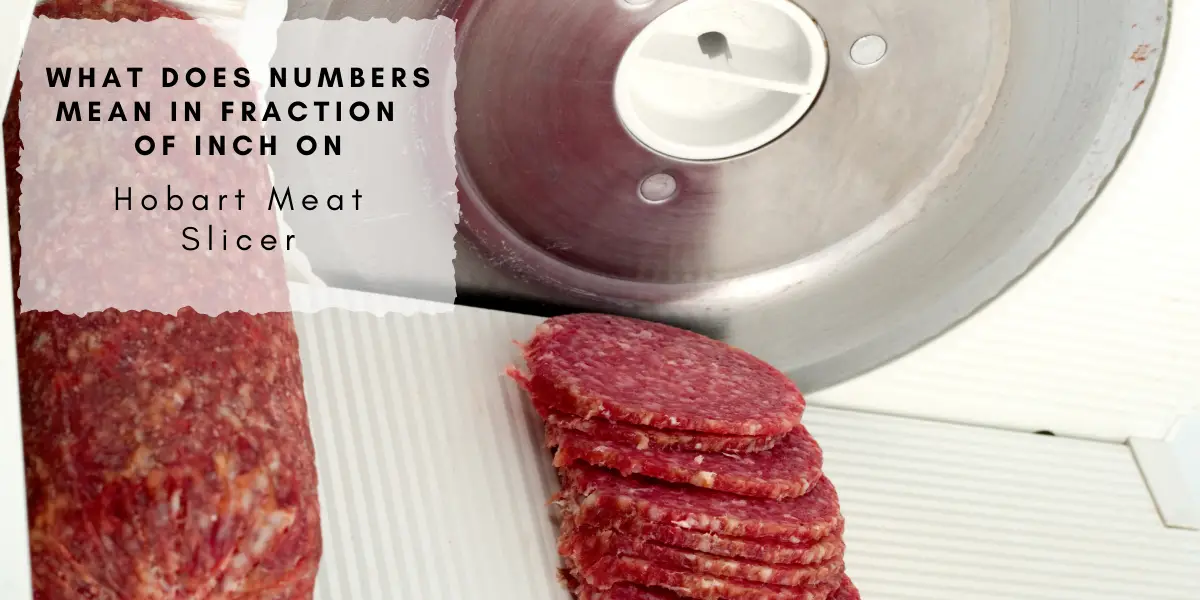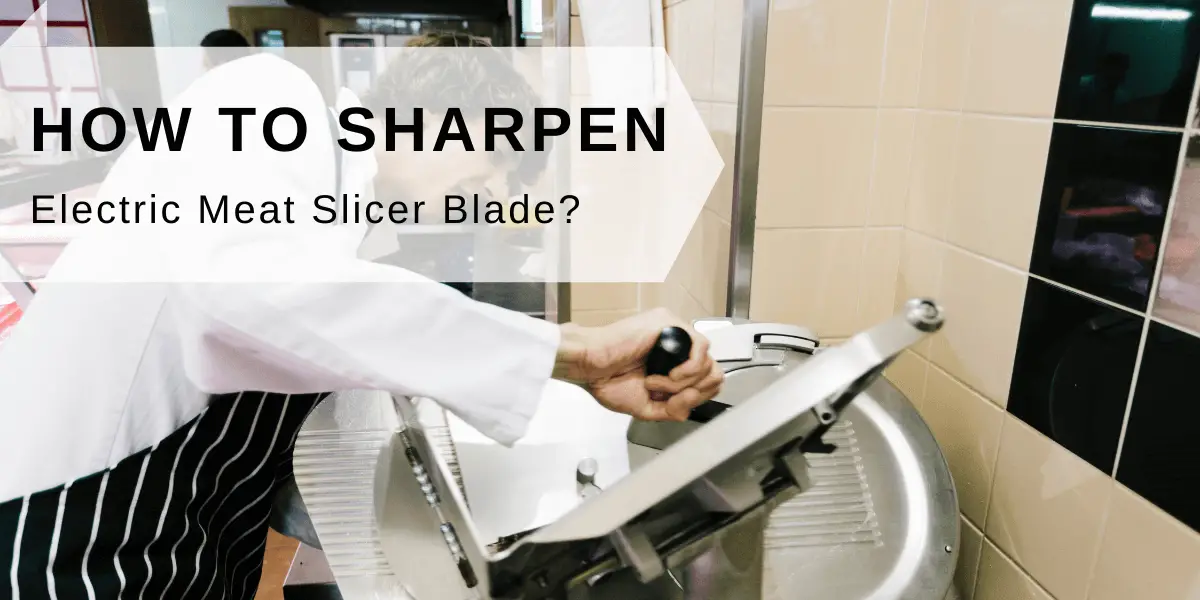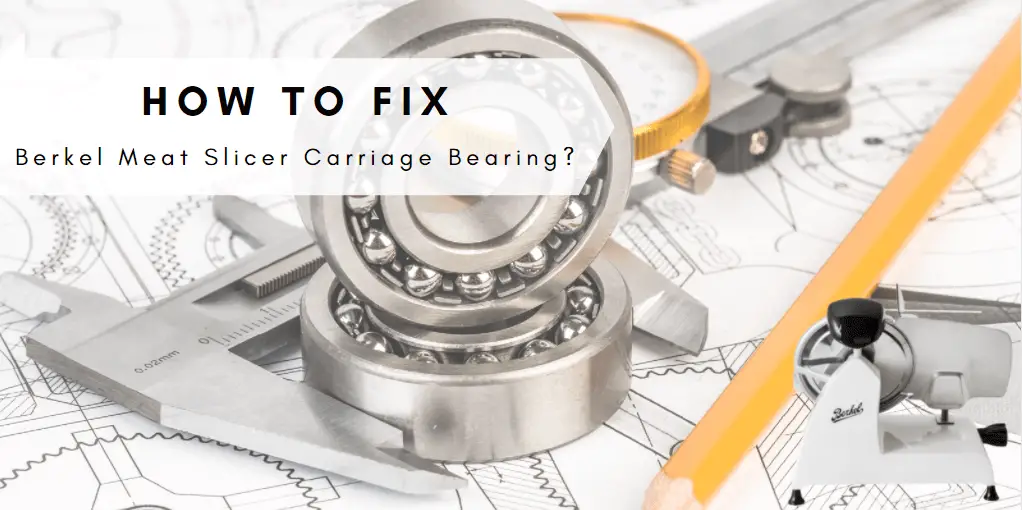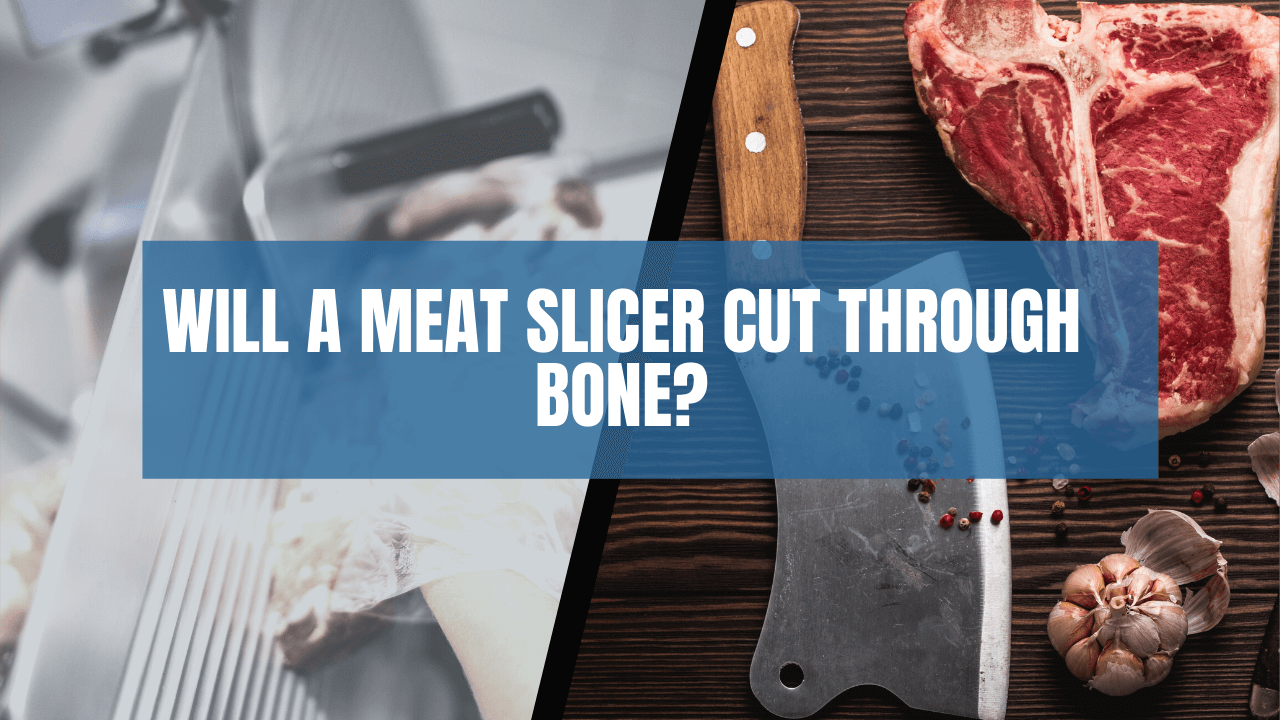A meat slicer is a versatile tool in many commercial kitchens and is increasingly popular for home use. It allows you to precisely slice meat, cheese, bread, fruits, and vegetables, making it a valuable addition to your culinary arsenal.
Using a meat slicer can be an intimidating process. But, with the right knowledge and understanding of what these machines are capable of, you can make short work of any variety of meats in no time.
What Is A Meat Slicer?
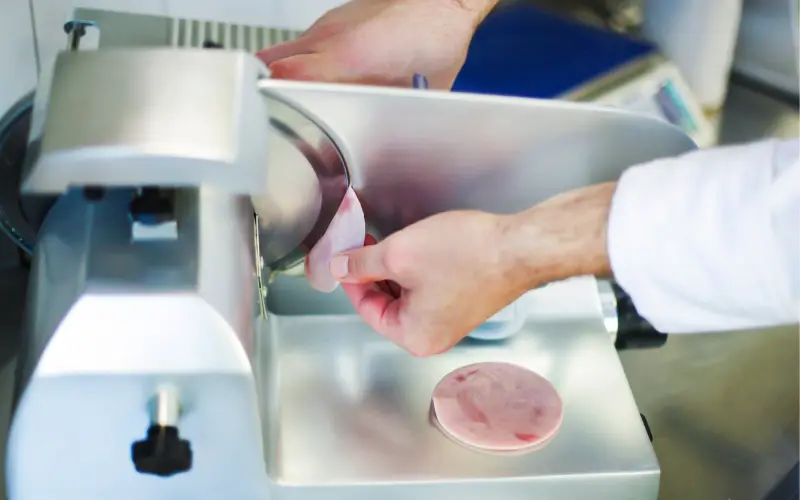
A meat slicer is a kitchen appliance designed to quickly and accurately slice meat into thin portions. It uses a sharp, rotating blade to cut through pieces of raw or cooked flesh, making it faster and easier than slicing by hand. The thickness of the slices can be adjusted depending on the type of food being prepared.
What You Can Use A Food Slicer For?
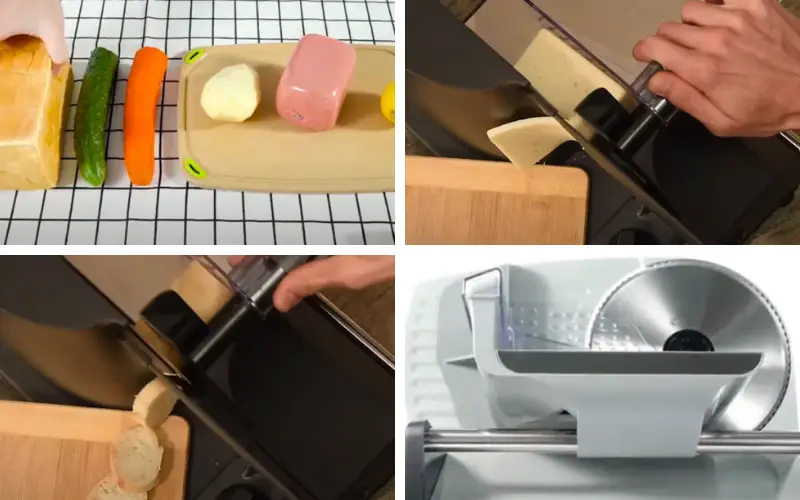
Using a food slicer can make meal prep much easier. You can use it to quickly and easily slice your favorite cuts of meat, such as beef, pork, turkey, chicken, and fish. It is also a great tool for slicing vegetables like cucumbers, tomatoes, peppers, and onions. Having the right thickness of slices can make all the difference in how your dish turns out. You can also use a food slicer to make deli-style sandwiches with perfectly thin slices of ham and cheese.
Choosing The Right Meat Slicer
When choosing a meat slicer, consider the following aspects:
- Power: Check the slicer’s horsepower. More power allows for heavier usage.
- Blade Size: A larger blade can handle larger pieces of meat.
- Safety Features: Look for safety features like handguards and non-slip feet.
- Ease of Cleaning: Choose a model that disassembles easily for cleaning.
How To Use A Meat Slicer?
- Safely Place Your Food In The Slicer: Place the food item onto the slicer’s platform before slicing. Press firmly to ensure it is secure and won’t move during cutting. Ensure all fingers and hands are away from the blade before turning on the device.
- Adjust The Thickness Of The Slices: Most meat slicers are equipped with a knob that allows you to adjust the thickness of your slices. Start by setting the knob on a lower setting and then make small adjustments until you find the desired slicing thickness. Use caution when adjusting the width, as some blades can be very sharp and cause serious injury if handled incorrectly.
- Turn On The Meat Slicer: Once you have prepared the meat, it’s time to turn on the slicer. Depending on your model and the make of the meat slicer, a switch or button may need to be pressed to power up the machine. Some models may also require that you plug an electrical cord into a wall outlet or power strip.
- Make Swift Slicing Motions: Once the meat is placed securely on the slicer, ensure your hands are away from the blade. Then use one hand to turn the handle located at the top of the slicer and use your other hand to guide it back and forth in swift slicing motions. This will help ensure that all slices are even and that no pressure is applied to the meat. Make sure to move the meat around after each slicing motion so that a different area of the meat is exposed for slicing.
- Turn Off The Meat Slicer: Switch it off and unplug the power cord when using the meat slicer. As tempting as it may be to leave the machine running for convenience, doing so runs safety risks. In addition, allowing a meat slicer to run for prolonged periods of time can cause damage to its motor, blades, and other components.
- Clean Your Meat Slicer: Keeping your meat slicer clean is important for safety and hygiene. Before using your slicer, wash the blade, pusher plate, and other parts with warm, soapy water. Then rinse them with clear water and dry thoroughly with a lint-free cloth or paper towel. This should be done after each use to prevent food contamination and reduce the risk of bacteria growth. If you’re slicing cooked meat, make sure it is completely cooled before cutting.
What You Should Avoid Of Meat Slicers?
- Slicing Frozen Meat: Never attempt to slice frozen meat with a meat slicer. Frozen meat is more difficult to cut and could damage the blade or cause injury. Allow all meats to thaw before slicing them on the machine.
- Cutting Meat With Bones: When cutting meat still on the bone, such as a roast or ham, care must be taken when slicing. Many people prefer electric meat slicers for this job because they provide a more consistent cut and require less physical effort than manual slicers.
- Slicing Soft Cheese: It is important to ensure that the slicer’s blades are not too sharp when slicing soft cheese. A dull blade will make it easier for the cheese to remain in one piece and cause less mess than a sharper blade. It would help if you were sure to use minimal pressure when guiding the cheese through the slicer, as this can cause the cheese to become squished and misshapen. If you are slicing a large block of cheese, you may even want to separate it into smaller chunks beforehand to make it easier to maneuver through the slicer.
- Trying To Fit Oversized Meats: It can be tricky if the meat you’re trying to slice is too big for your slicer. The best way to approach slicing an oversized piece of meat is by cutting it into smaller pieces that will fit in the slicer. Doing this can help prevent overloading the motor and causing a breakdown or strain on the slicer. You can use a knife to cut the larger pieces down for extra safety before switching to your meat slicer.
- Slicing Raw Then Cooked Meats: A good-quality sharp knife is important when slicing raw meat. If you cannot access a high-quality, sharp knife, use a meat slicer instead. Before using the slicer, ensure all parts are thoroughly cleaned and disinfected. Then, place the meat on the platform of the slicer. You may need to adjust the slicer’s blades depending on how thin or thick you want your slices to be. After adjusting, start slicing and ensure your hand is away from the blade.
- Operating The Meat Slicer Bare-Handed: When slicing meats with your meat slicer, it is important to remember never to use your bare hands. Being in contact with the blade is dangerous and can cause serious injury. Instead, you should always wear protective gear such as cut-resistant gloves or an apron when handling the slicer. This will help protect you from accidental slips or contact with the blade.
- Using The Wrong Blade: When using a meat slicer, it’s important to ensure you’re using the right blade. Different types of food require different blades to be properly sliced. For instance, if you’re slicing vegetables, use a serrated blade; if you’re slicing cheese or bread, use a smooth blade; and if you’re slicing frozen foods, use a straight blade. The wrong type of blade can cause damage to the food and the slicer itself or may not provide optimal results.
The Benefits Of Using A Meat Slicer
Operating a meat slicer offers several key benefits that enhance the culinary experience.
- Precision: Meat slicers offer precise, uniform slices that are difficult to achieve with a typical kitchen knife.
- Efficiency: The slicer drastically reduces the time it takes to slice large amounts of meat.
- Versatility: Beyond meat, you can also slice cheese, vegetables, fruits, and bread, making it a versatile addition to any kitchen.
Maintaining Your Meat Slicer
Proper maintenance of your meat slicer is crucial for its longevity.
- Regular Cleaning: Clean the slicer after each use to avoid food residue build-up.
- Sharp Blade: Sharpen the blade regularly for optimal slicing performance.
- Professional Servicing: Have the slicer serviced regularly by professionals.
FAQs
Is a Meat Slicer Worth It for Home Use?
A meat slicer can be a great investment for your home if you frequently slice large amounts of food. It not only saves time but also ensures precise, uniform slices.
How Do I Sharpen a Meat Slicer Blade?
Many meat slicers come with a built-in sharpener. If yours does, refer to the user manual for instructions. If it doesn’t, you may need to purchase a slicer blade sharpener or have it professionally sharpened.
How Often Should I Sharpen My Meat Slicer Blade?
The frequency of sharpening your slicer blade depends on its usage. For heavy usage, sharpening once a week is suggested. For lighter usage, sharpening once a month should suffice.
How Do I Use a Meat Slicer Safely?
Safety is paramount when using a meat slicer. Always use the food pusher to hold the food, wear cut-resistant gloves for protection, and lock the slicer when not used. Avoid trying to slice overly hard or frozen foods.
Conclusion
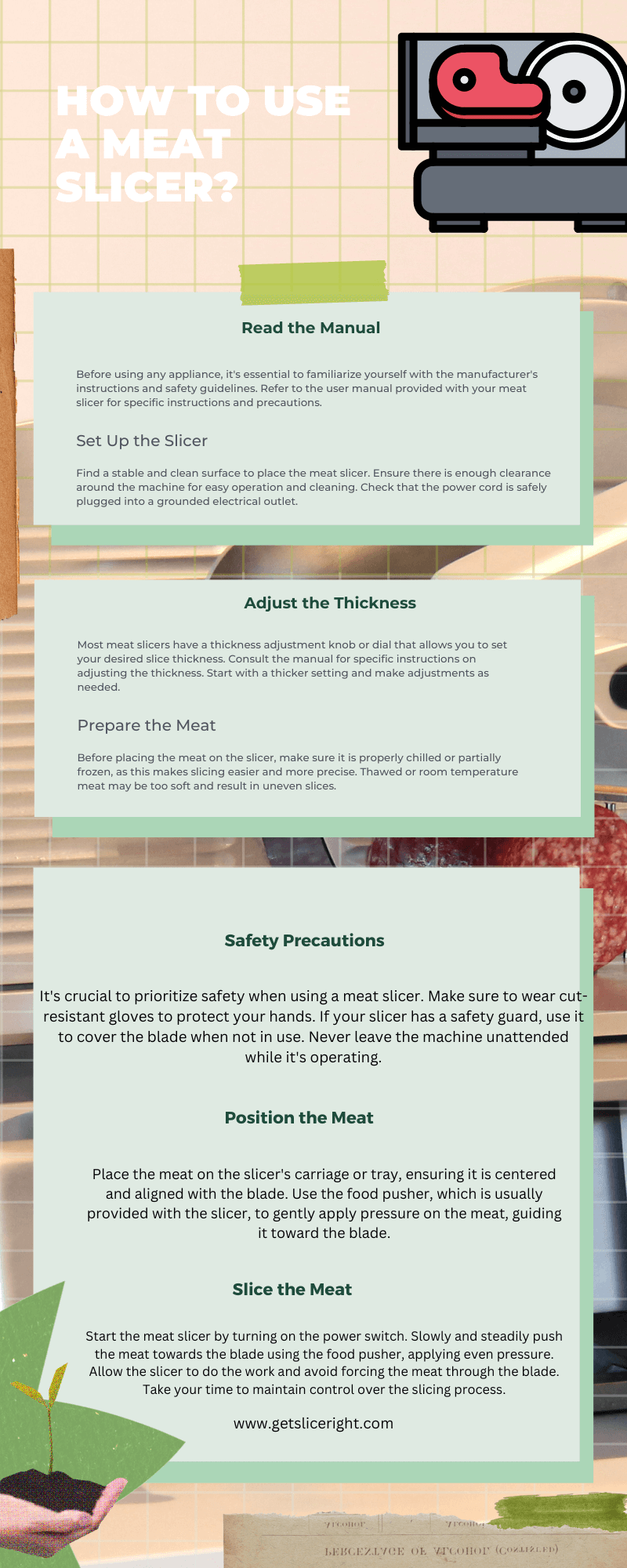
Using a meat slicer is not as difficult as you may have thought; it does require some extra knowledge and precautions. It’s important to remember that cutting meat with a slicer can be risky if done incorrectly, so always take time to read and understand the manufacturer’s instructions before using the machine. When used correctly, a meat slicer can help you easily create beautiful, thin slices of meat. You can become an expert in no time with practice and careful handling.

John Hebdon is a food enthusiast, passionate chef, and author of various articles and blog posts related to food and cooking. With a deep love for all things culinary, John’s blog serves as a platform to share his extensive kitchen experiences with a broader audience.
In addition to his culinary expertise, John has a flair for writing and a natural ability to share his passion for food with others. His articles and blog posts are informative, engaging, and packed with practical tips for readers of all skill levels.
As a food enthusiast and writer, John is always on the lookout for new and exciting culinary experiences. Whether it’s trying out a new restaurant, experimenting with a new recipe, or simply sharing a favorite dish with friends and family, John is always eager to explore and share the world of food with others.

